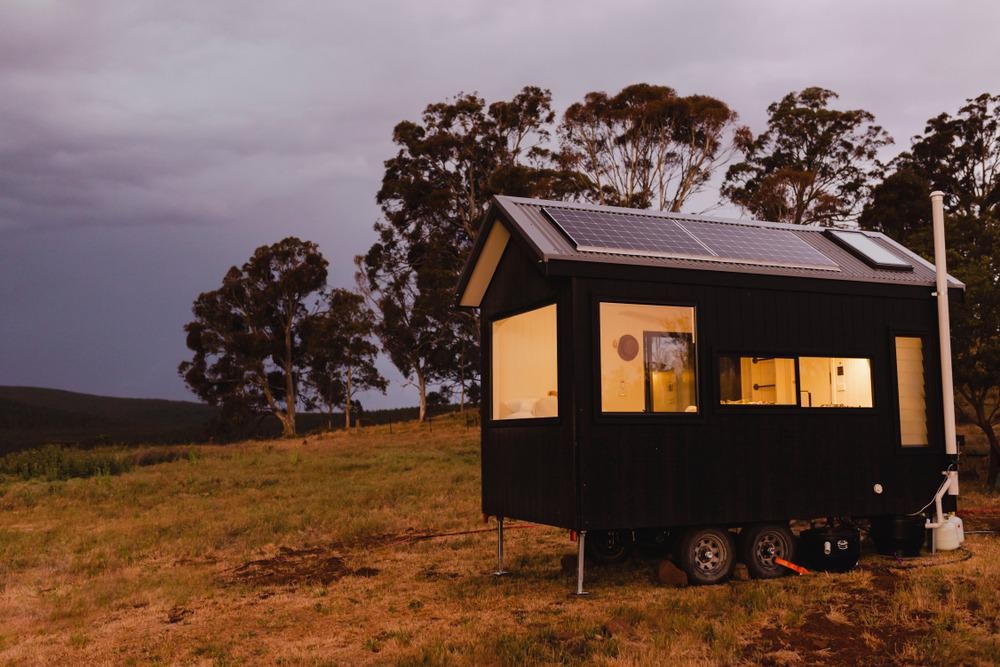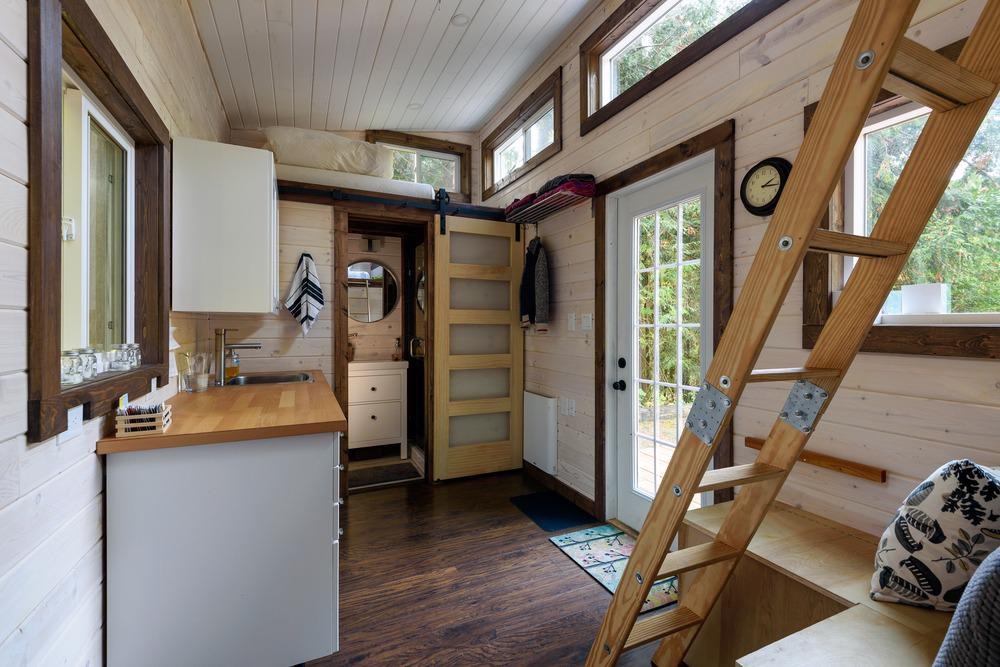There is a small revolution in home design currently happening – the tiny house movement. In an age of increasing urban sprawl and the consequent problems that a burgeoning world population brings, some have opted to downsize and make their living space about more than just the space they occupy.

Image Credit: St. John Imagery/Shutterstock.com
Background to the Phenomenon
In the United States especially, there has been a trend for domestic spaces to increase in size, in line with improved material wealth, income, and prosperity. From 1978 to 2013, the average sizes of new single-family homes increased from 1,780 to 2,662 square feet.
The tiny home movement bucks this trend, with smaller living spaces becoming more attractive, driven by changing consumer needs. Tiny houses are classed as domestic dwellings less than 400 square feet in size. Some examples can be as small as 80 square feet, which is only 7.4m2.
The History of the Tiny House Movement
The tiny house movement has its roots in the 19th century. The publication of the book Walden by US naturalist, author, and essayist Henry David Thoreau, who inspired the Beat poetry of Kerouac and Ginsberg, is a profound meditation on returning to nature and living simply without the baggage of modern society.
The shotgun shack, which was widely used by urban Americans up until the 1930s and the Great Depression, is a precursor of the modern tiny home. Born out of necessity, this was a narrow single-story construction that, despite its small size, housed entire families of blue-collar American workers.
Some examples of tiny homes can be found from the 1970s, the period when some aficionados of tiny homes and experts consider the modern movement was born. Artist Allan Wexter, for example, investigated the concept of compact living. In Japan, the rise of capsule hotels from 1979 onwards offered cheap, basic accommodation for guests who could not afford larger hotel rooms or preferred the more compact, minimalist space afforded by the capsule hotel concept.
However, it was not until 1999 that the modern movement gathered pace and tiny houses were popularized with the work of Jay Shafer, who is regarded as the godfather of tiny houses. Schaefer’s tiny house on wheels and the publication of The Small House Book spearheaded a revival in interest in smaller living spaces. His Tumbleweed Tiny House company was formed in the wake of his success, which he left a few years later to focus on housing rights and social justice.
Advantages of a Tiny Home
Minimalism addressed the clutter of modern life and conspicuous consumerism. Similarly, the tiny home phenomenon addresses issues of population density and our impact on the environment. In some areas of the world, the move toward tiny homes has been born out of necessity, akin to the shotgun shacks of the early 20th century and historical architectural phenomena like the Kowloon Walled City in Hong Kong.

Image Credit: ppa/Shutterstock.com
Interest in tiny homes crosses socioeconomic barriers. Millennials who cannot afford larger domestic dwellings, individuals who want to reduce their carbon footprint, and retirees who wish to downsize have all been attracted to smaller living spaces. Additionally, wheeled tiny homes offer homeowners the possibility of increased mobility, akin to an RV.
Tiny homes offer advantages including less building costs, more sustainable construction methods and materials including recycled wood and steel, less build time, eliminating mortgage costs, financial freedom, eco-friendliness, a connection with nature and one’s surroundings, energy efficiency, experiencing more due to retaining a higher slice of income, and a simpler life due to downsizing. Furthermore, tiny homes offer possibilities for strengthening local communities.
Tiny homes can also solve pressing social issues. Due to space savings and reduced costs, they can be used to house homeless and refugee populations, improving the quality of life of individuals underserved by the traditional housing market, and acting as a temporary solution for individuals who would otherwise be forced to sleep rough.
Drawbacks
However, tiny homes are not for everyone, and there are drawbacks to living in one that homeowners must consider carefully. In the UK, for example, the planning permission process can be prohibitive, lengthy, and costly, increasing the price tag and complexity of building and situating a tiny home. The cost of purchasing land can also add to the expense of building and owning a tiny home.
Possibly the most obvious drawback of such a dwelling is available space. A tiny home may not be ideal for large families or people whose mental health would suffer in a confined space (although the possibility of having more land can negate these issues.) Spaces must be highly organized, and possessions must be minimized to avoid clutter. Entertaining can also be challenging in a small space, especially during winter months when it is too cold to use an outside space.
It can also be difficult to find land to situate a tiny home in. In the US, zoning regulations can present issues, and local regulations can prohibit parking on land due to rules around camping. RV parks in the US have specific criteria that can present challenges for using the land for tiny homes.
The Future
Tiny homes are becoming more attractive for homeowners for a multitude of reasons, and the recent popularity of TV shows has attested to the growing interest in smaller domestic dwellings. As consumer patterns change to address the many environmental, social, and economic challenges of the 21st century, the tiny home movement will no doubt continue to grow.
More from AZoBuild: How Has the COVID-19 Pandemic Changed Priorities in Residential Spaces?
Further Reading and More Information
D’Silva, B (2022) Why the tiny house is perfect for now [online] bbc.com. Available at: https://www.bbc.com/culture/article/20211215-why-the-tiny-house-movement-is-big
Picchi, A (2015) Can tiny houses solve the homeless problem? [online] cbsnews.com. Available at: https://www.cbsnews.com/news/can-tiny-houses-solve-the-homeless-problem/
Levin, H (2012) Living in a Tiny Home: Benefits & Drawbacks [online] abcnews.com. Available at: https://abcnews.go.com/Business/living-tiny-home-benefits-drawbacks/story?id=17742823
Disclaimer: The views expressed here are those of the author expressed in their private capacity and do not necessarily represent the views of AZoM.com Limited T/A AZoNetwork the owner and operator of this website. This disclaimer forms part of the Terms and conditions of use of this website.